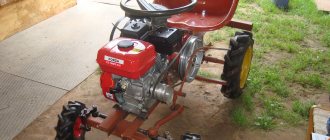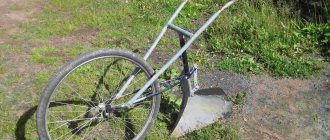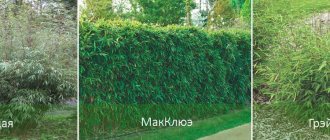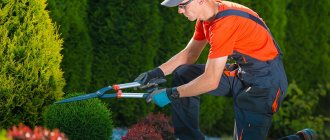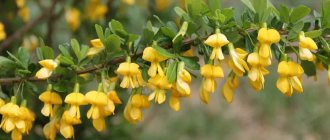A modern summer resident often faces a problem: how to quickly and efficiently cultivate a plot of land. We recommend choosing a walk-behind tractor or cultivator for this. They are ideal for a large vegetable garden, and the set of attachments makes them indispensable on the farm.
- Why is it necessary to till the soil?
- What is the difference between cultivation and plowing
- What types of walk-behind tractors are there?
- What engines and fuel are used in walk-behind tractors?
- Important technical parameters of walk-behind tractors
- What types of cultivators are there?
- What engines and fuel are used in cultivators
- Important technical parameters of cultivators
- What additional attachments are used?
Why is it necessary to till the soil?
There are several reasons to plow and cultivate the land:
Salinity and lack of oxygen
The upper layer of the earth dries out, and in the deeper layers moisture is retained and salt is deposited. Productivity depends on this. If the top layer is loosened and turned over, the soil receives oxygen. It is necessary for important microorganisms.
Weeds and pests
After plowing, the weed roots die in the sun or die from damage.
Soil erosion or excessive compaction
Wind erosion blows away the fertile part of the land. Soil compaction compresses the pores that should conduct water and air. This prevents root growth.
Previously, summer residents used a shovel or horses for such excavation work. Hand cultivators cope well with tasks in oversized summer cottages with well-groomed soil, small flower beds and beds. On hard ground it is difficult to use hand tools. Not everyone can physically work like this. Therefore, in modern dachas, large gardens and vegetable gardens, walk-behind tractors, cultivators and mini-tractors are used.
Mechanization of manual labor provides many advantages, including saving time, effort and efficient performance of such work as:
- plowing the land;
- cultivation;
- preparing furrows for planting;
- hilling;
- digging up root crops.
Types of attachments
If you want to make your cultivator truly multifunctional, we recommend installing additional attachments on it. This equipment allows you to perform not only standard types of work such as plowing or loosening: with certain types of attachments you can hill up the soil, plant and harvest potatoes, cut furrows, and sow seeds. Some attachments are designed for tasks such as making hay, removing debris and snow. The use of attachments will save a lot of money, because you do not have to purchase separate equipment for various types of agricultural work.
Hinges can be divided into two types: active and passive. Active ones have moving parts that begin to work using the cultivator engine. The rotational energy of the engine is transferred to the linkage either with a belt drive or through a special power take-off shaft. Active type attachments include a snow blower, different types of mowers, and a sweeping brush. Passive attachments are not equipped with their own moving parts and are activated only by the movement of the cultivator itself. The most popular attachments of this type are a plow, a hiller, a potato planter, and a potato digger.
Let's look at the most useful and popular types of attachments among farmers.
Hitch
This is an auxiliary adapter element that allows you to attach any attachment to the cultivator. Without a hitch, you are unlikely to be able to install a plow or hiller.
Advice! As a rule, each specific model has its own individual coupling mechanism. It is therefore recommended that the operating parts of the hitch and the hitch be manufactured by the same manufacturer.
There are both universal hitches and hitches manufactured for a specific brand. Typically, the towbar is installed at one time using mounting brackets. Removing it is much easier; it is not necessary to use additional tools.
Hiller
An experienced farmer rarely does his work without it. The equipment facilitates hilling the soil, forms smooth ridges and an earthen ridge. Most often, the cultivator is equipped with a special hiller for potatoes. It is used for cutting even furrows and digging up root crops during the harvest period. There are hillers with dump plowshares (steel sheets) and disk hillers of the propeller type. Today, disc hillers are most in demand in agriculture; most modern manufacturers produce them. When performing its functions, this type of hiller encounters much less resistance from the ground. As a result, the load on the equipment and the lead operator is reduced. By adjusting the settings when installing the disc hiller, you can form earth ridges of different heights. At the same time, the earthen ridges are stronger and more stable than those of hillers with ploughshares. When creating a ridge, the latter pour part of the earth back into the furrow.
Disc hiller for cultivator
Plow
They are used for virgin soil during plowing, when it is necessary to turn over large layers of earth. The hitch is installed via a hitch or a special adapter. Nowadays, summer residents use one of two types of plows: standard and reversible. A conventional plow forms a moldboard in only one direction during operation. The reverse one, in turn, consists of two plows, therefore, soil dumps are carried out on two sides at once. With the help of the second type of plow, you can plow a large area of the site much faster and more efficiently.
Reversible plow
Potato planter
Purchasing this attachment will save you from the tedious and time-consuming procedure of planting potatoes. The planter is a complex unit consisting of a small plow, a hopper with a transport belt and a disc hiller. The plow forms a trench and prepares the soil for planting root crops. Seed material for planting is loaded onto the transport belt. The compact hiller loosens the soil and sprinkles the planted material.
This equipment is productive, but expensive. However, the potato planter fully justifies its price when cultivating a large number of hectares of land.
Potato digger
The main task of the hitch is to collect the finished crop. The design is similar to a hiller, but instead of steel blades it has long arms reminiscent of a broom. The principle of operation is simple: the rays dig up the surface of the soil, the soil is thoroughly sifted, and the pulled out root crops are automatically thrown in the other direction. The attachment is fastened to the cultivator via a hitch.
Grain planter
As the name suggests, this attachment is used for planting seeds. Available in two variations: 2-row planter and 4-row. The hitch is a complex consisting of a hopper for seed material, a calibration disk, and a small plow for cutting furrows. To prevent the planter from slipping, a steel lug is installed in the rear part of it.
What is the difference between cultivation and plowing
If, during plowing of a plot, the earth is turned over in layers, then in the case of cultivation, it is loosened to a certain depth, thereby the fertile layer of soil remains in place.
As the cultivator passes, the top layer of soil loosens and crumbles, resulting in mixing of the soil. Afterwards the area is leveled and visually enlarged. During cultivation, the roots of harmful plants and weeds are also pruned. This is especially necessary after winter, when the pressure of snow and moisture causes the soil to become compacted.
The importance of arable work in the country is complemented by labor intensity. This is physically difficult work, so choosing the right assistant device can greatly facilitate tasks on the land. Thus, 10 acres of land can be cultivated not in 2 days, as by hand, but in 2-3 hours. So what should you buy: a walk-behind tractor or a cultivator?
Cultivator and its types: stubble, row crop, inter-row, etc.
CULTIVATOR
- This is an agricultural implement that is intended for surface tillage of the soil without a full rotation of the layer. The purposes of such processing may include the following:
✅Incorporation of crop residues, pesticides and fertilizers into the soil.
✅Creation of a seed bed for high-quality sowing.
✅Creation of a fine-lumpy seed layer.
✅Destruction of weeds.
✅Destruction of the soil crust.
✅Leveling the field relief.
As can be seen above, the range of tasks for a cultivator is so wide that some types of cultivators may have more differences than similar design elements. So, for example, pre-sowing treatment of 2 cm can be carried out with specialized implements with pointed tines and many additional working parts. To work at a depth of 15-20 cm and with a large amount of plant residues, cultivators with a powerful frame and chisel-shaped working bodies with plowshares or wings can be used.
